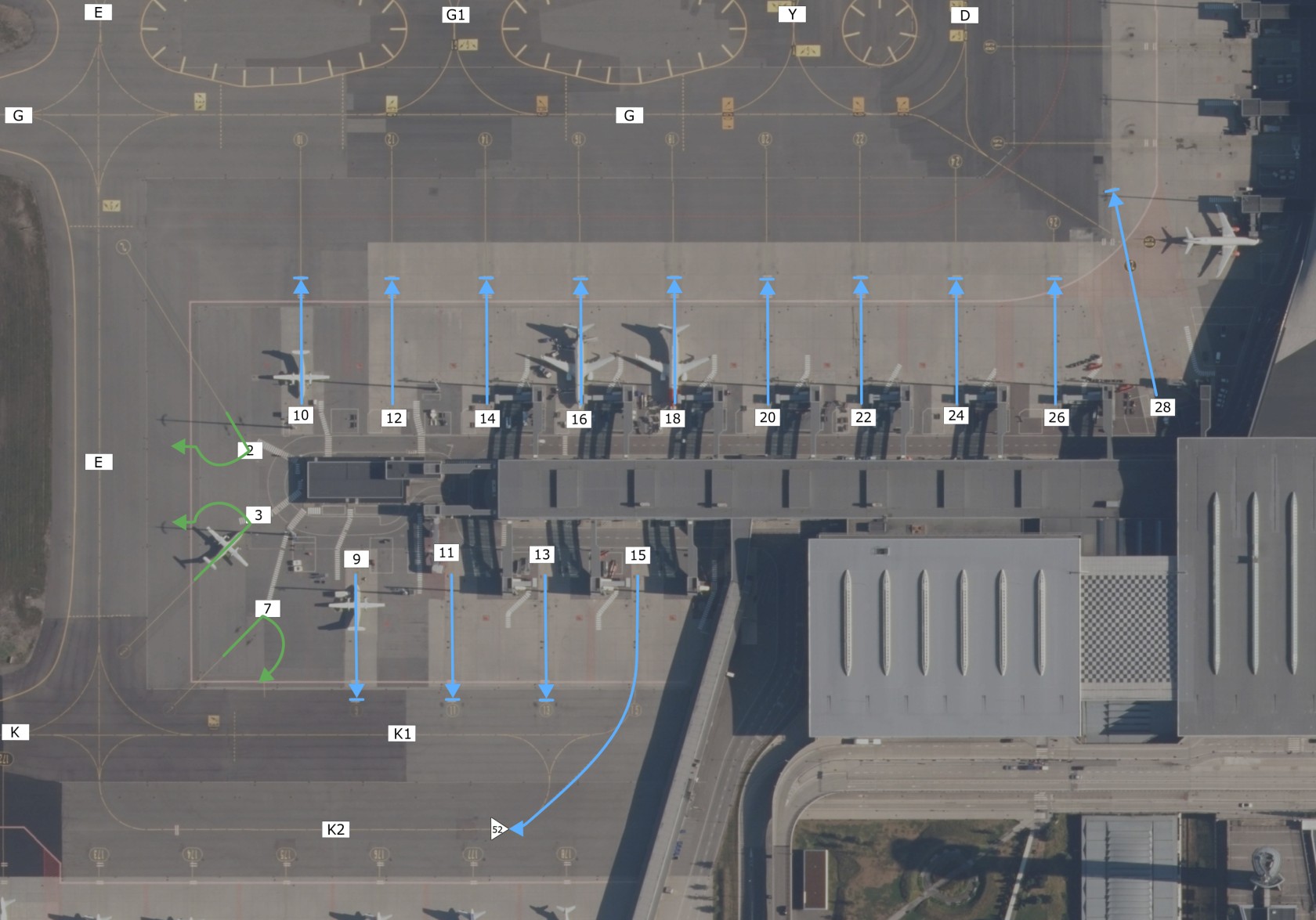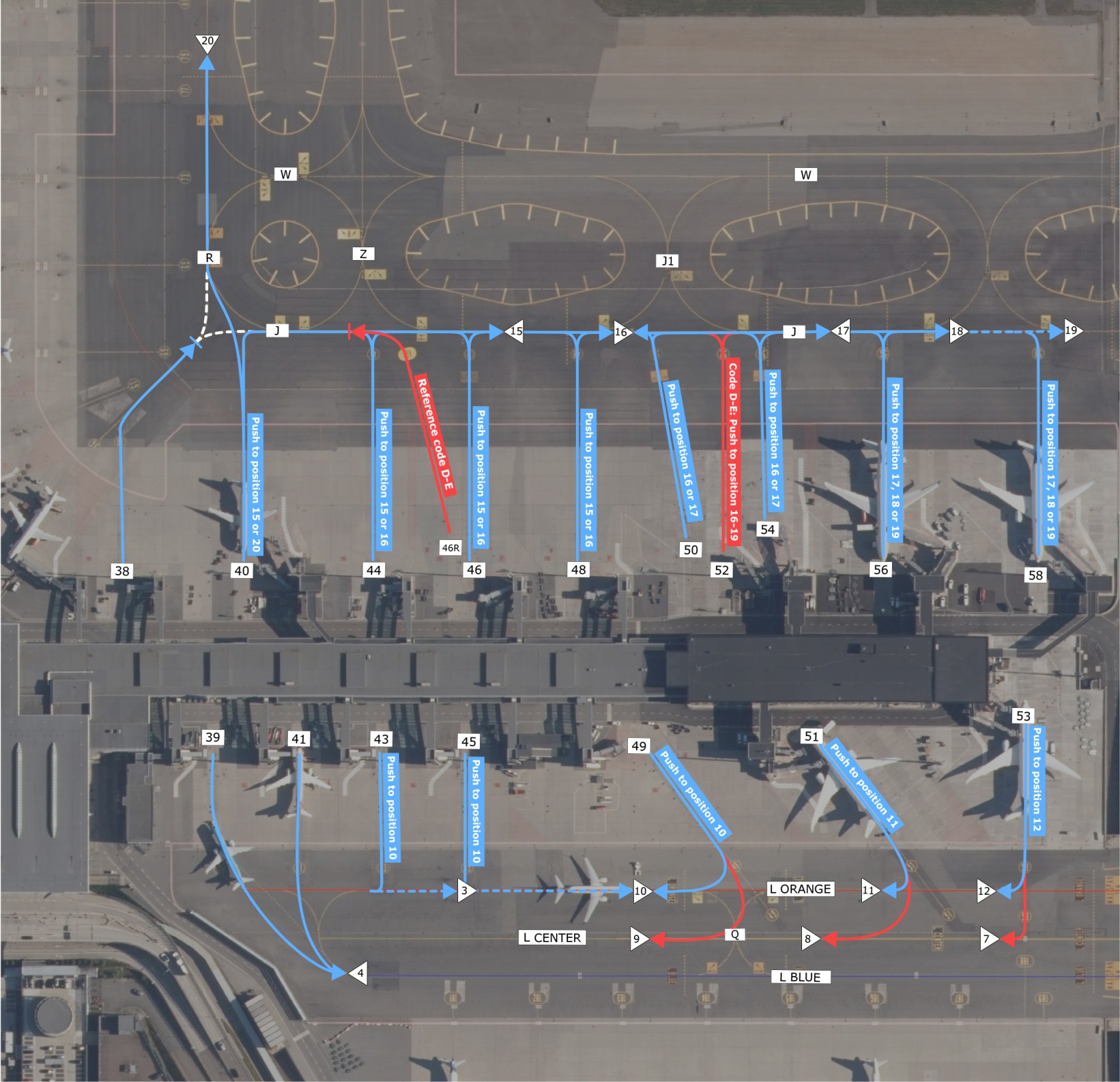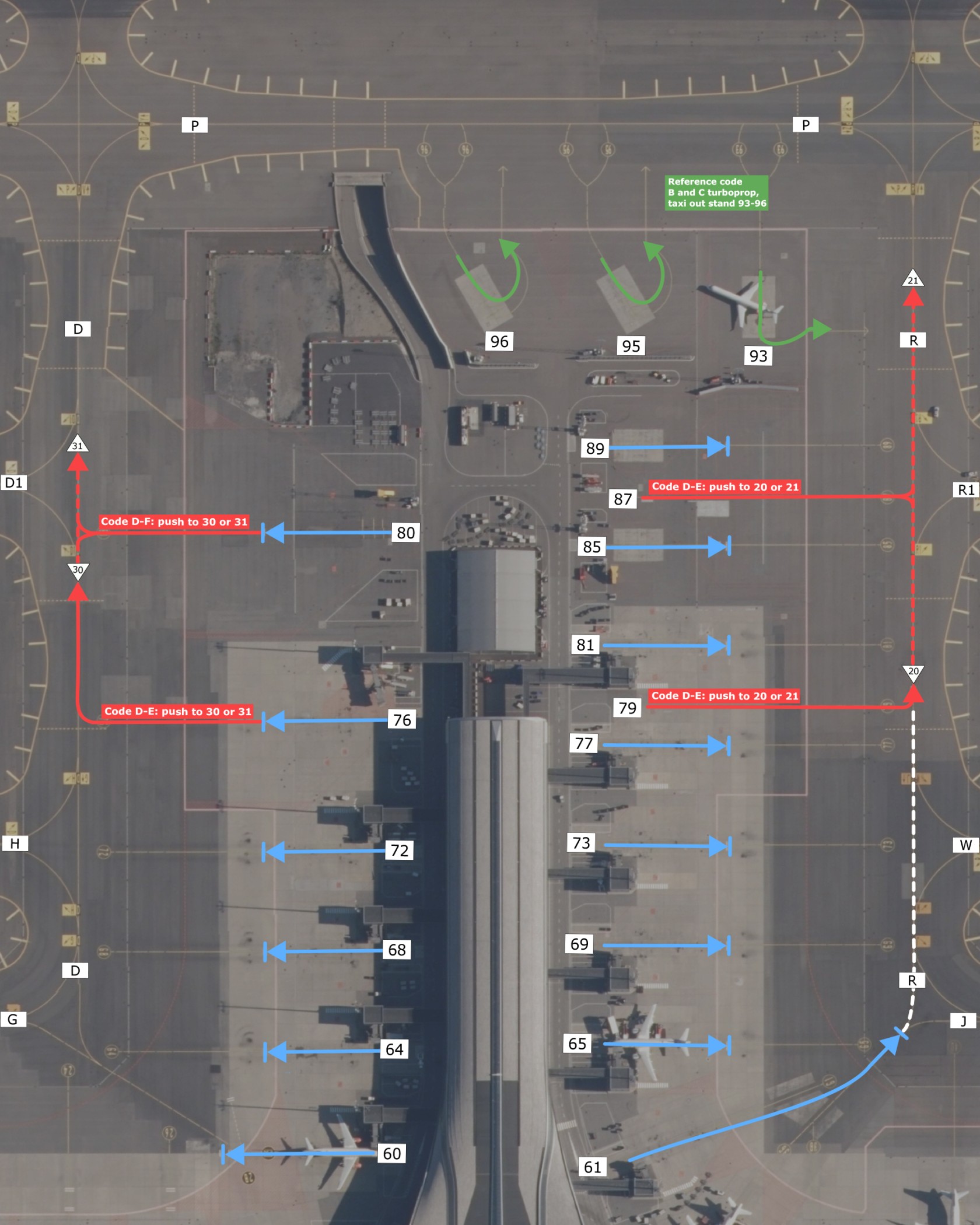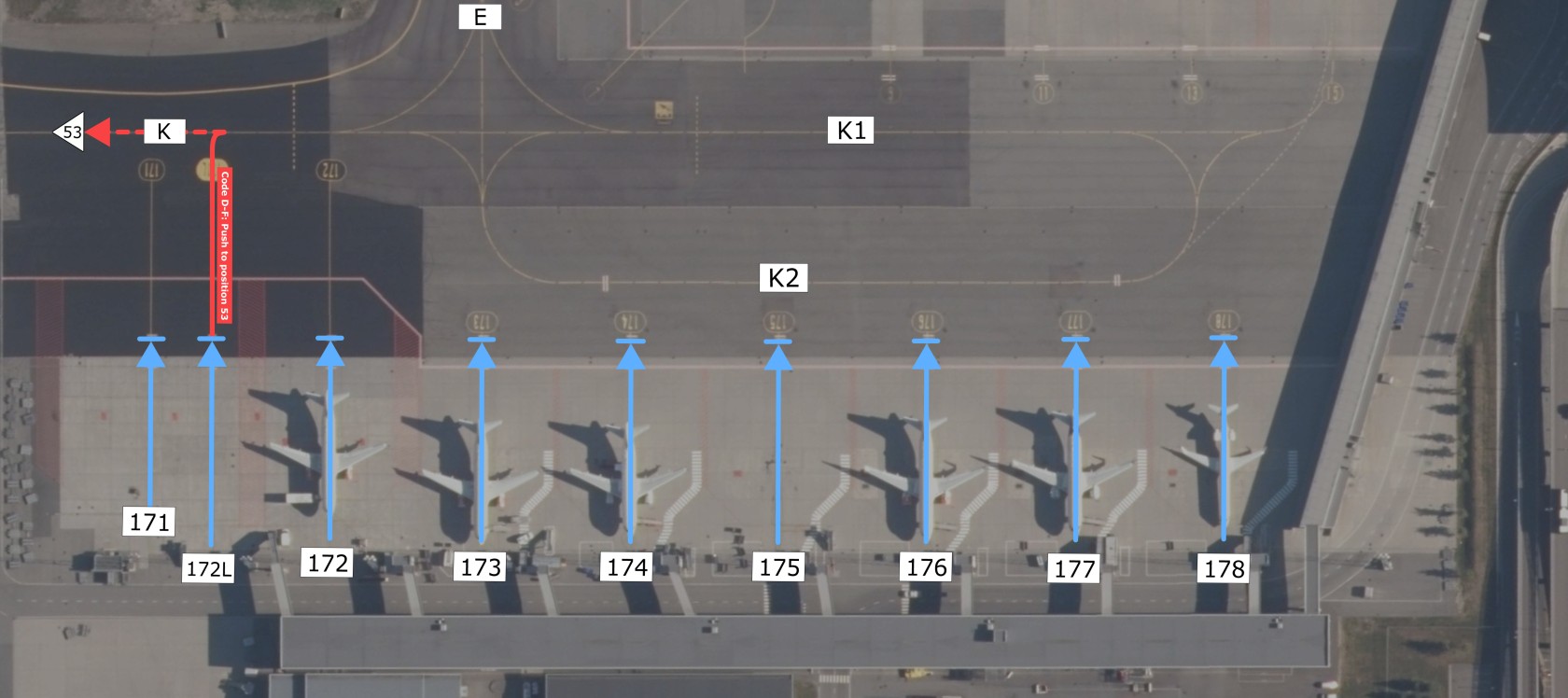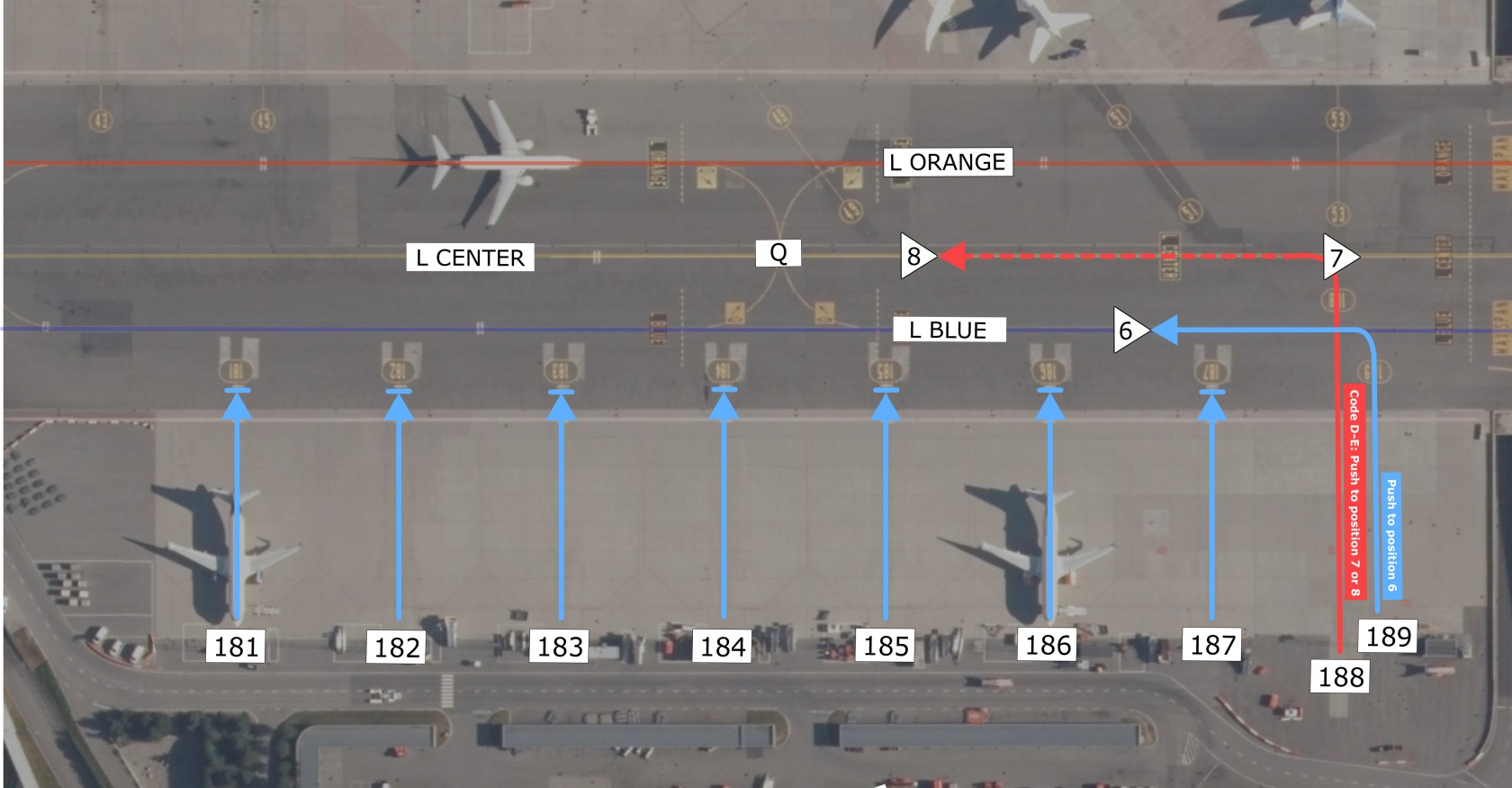ENGM – Oslo Lufthavn
Available stands
Overview
Oslo Airport, Gardermoen is the main airport of the Norwegian capital Oslo, and the main international airport of Norway. Having earlier served as a secondary airport, air force base and charter airport, Gardermoen opened as the new main airport of Oslo on October the 8th 1998, replacing the now closed Fornebu Airport. Today, it has over 22 million passengers passing through each year, with 162 destinations worldwide, from short domestic flights to intercontinental long hauls. The airport is currently undergoing expansions, creating a new terminal pier stretching to the north, and it is scheduled to be complete in 2017. As a result from the work in progress, the apron has undergone quite a few changes this year with new taxiways and remote stands to accommodate the new building.
Use of stands
The west pier of the main terminal is the airports domestic terminal, and the east pier is the international terminal. As a rule of thumb (though not set in stone), international flights should park at the east side of the new terminal, from stand 38 through stand 53, and remote parking 181 through 187. Domestic flights should park at the western side of the new terminal, stands 2 through 26, and remote stands 171 through 178. All flights to or from a non-schengen country should use stand 42, 43, 44, 45, 46 (46R), 47, 48, 49, 50, 51 or 53. Stand 42, 43, 44 and 45 are flexi stands, and can also be used for schengen flights. The new gates at the new pier are combo gates and can be used for both domestic and international flights. The apron and terminal on the western side of runway 19R/01L is the General Aviation area. Airline traffic does not utilize the western apron.
IFR clearance
Initial contact is with Clearance Delivery, reporting callsign, stand number, and latest ATIS identification letter and QNH.
Push-back
Most of the terminal gates requires straight-back pushes, however a few have turn-pushes. Please have a look on the maps below to see how you should perform your push from the stand. You can click on the images to have a closer look.
Taxi
Taxi instructions at Gardermoen includes the full taxi route, however the runway intersection is not always included. If for example “holding point runway XX” is stated in your instruction, you may call ATC with “CALLSIGN, ready via ” as you approach this intersection, and it may be approved if traffic permits. Make sure to double-check if you are able to use the runway length from the intersection before requesting it. On runway 01R, always expect to use full length via B1, due to noise abatement and SID procedures.
Runways
Given that you’ve parked according to the paragraph describing the Use of stands, usually the eastern runway (19L/01R) is used for international departures/arrivals, and the western (19R/01L) for domestic departures/arrivals. This however is not a set rule, and runways are organized to accommodate high traffic loads. The western runway (19R/01L) has a TORA of 3600m, the eastern runway (19L/01R) has a TORA of 2950m. Heavy aircraft may request to use the western runway due to its length, make this request as you request your IFR clearance.
SIDs
All SIDs are individually numbered for each runway. When receiving your clearance, know that the SID stated is only valid for one runway, in case the controller forgets to state the departure runway. RNAV SIDs at Gardermoen has an initial climb altitude of 7000ft. If you are unable to follow the published SIDs (old AIRAC, default or non-database freeware aircraft, etc.), request an Omni-directional departure. Omni-directional departures climbs on runway track to 1700ft followed by a turn according to ATC clearance. Omni-directional SIDs has an initial climb of 4000ft. It is important that you NEVER climb above the initial climb without ATC clearance, as STARs and SIDs cross each other at different altitudes.
STARs
Oslo airport Gardermoen is one of the first airports in Europe to use a “Point Merge System”, or PMS. This means that all STARs end up in a “fan” made out of waypoints (study the STAR charts for Gardermoen), in which pilots should always be prepared for a direct routing towards the merge waypoint, 4 in total, in order to ease the workload of approach ATC. All STARs are valid for both parallel runways, 19L/R or 01L/R. Expect Approach ATC to inform you of which runway to expect.
The last fix of the STAR (or Merge Point) is followed by a transition to the ILS approach for each runway. ATC often replace these with vectoring, but always be prepared to fly the transition, and do NOT fly direct from the merge point to the Final Approach Fix. If you have no transitions available, inform ATC and request vectoring. Study the approach charts, and make sure to always follow altitude and speed restriction, unless otherwise instructed by ATC
Approach
The default approach to Gardermoen is ILS for all runways. 19R and 01R are CATIII equipped, in case of low visibility conditions. RNAV approaches are available on request. Visual approach is not approved for any jet aircraft, only props may request visual approach.
Direct routings
In Norway, direct routings are often used. Both arriving and departing traffic should be prepared to fly direct the end of SIDs, STAR Merge Points, and airspace border fixes. Make sure you have your filed route and waypoint page available to quickly accommodate direct routings.
Communications
You can always check online positions and sectors by visiting vatglasses.uk
ENGM_D_ATIS – Gardermoen Departure ATIS – 127.150
ENGM_A_ATIS - Gardermoen Arrival ATIS - 126.125
ENGM_DEL – Gardermoen Delivery – 121.675
ENGM_W_GND – Gardermoen Ground West – 121.600
ENGM_E_GND – Gardermoen Ground East – 121.900
ENGM_W_TWR – Gardermoen Tower West (01L/19R) – 118.300
ENGM_E_TWR – Gardermoen Tower East (01R/19L) – 120.100
ENGM_W_APP – Oslo Approach West – 120.450
ENGM_E_APP – Oslo Approach East – 118.475
ENGM_D_APP – Oslo Director – 119.970
ENGM_F_APP – Oslo Final – 128.900
ENOS_CTR – Norway Control (Oslo ACC south) – 118.875
ENOS_6_CTR – Norway Control (Oslo ACC north) – 120.375
ENOS_8_CTR – Norway Control (Oslo ACC south split) – 134.350
ENOR_CTR - Polaris Control (Bandbox) - 125.500
ENOR_S_CTR - Polaris Control (Bandbox South/Covering south of ENVA) - 121.550
ENRC_CTR - Gardemoen Tower (Bodø Remote Tower Center) - 118.325
ENRC_S_CTR - Gardemoen Tower (Bodø Remote Tower Center) - 118.425

